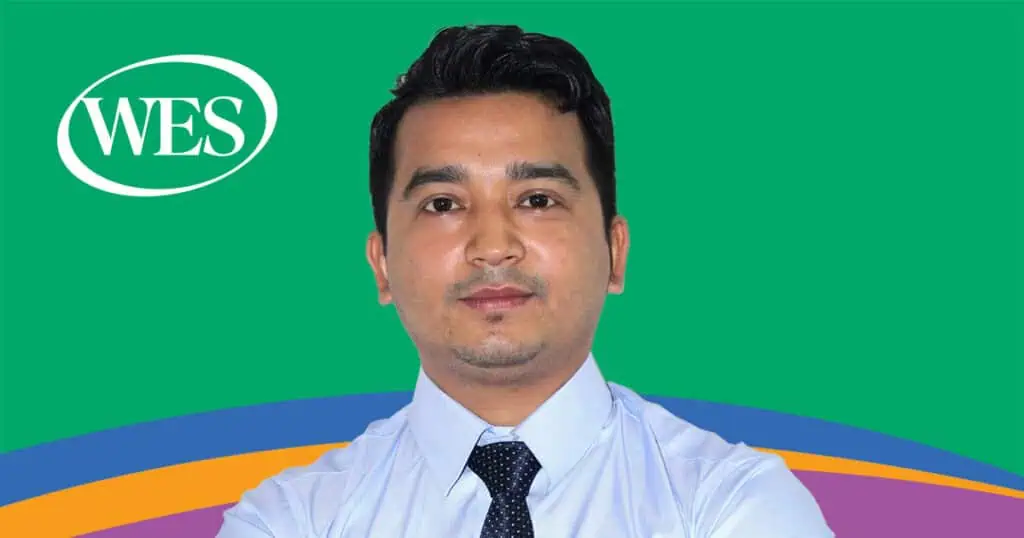Many international students apply to public health programs in the U.S. because they want to pursue a career in the rapidly growing health care industry and make an impact by helping others. WES Advisor sat down with Megan Garber, the Associate Director of Career and Professional Development for Graduate Programs in Public Health at the University of Miami’s Miller School of Medicine, to discuss some of the frequently asked questions she receives from international students who want to pursue a public health degree in the U.S.
Keep reading to see Megan’s responses to questions about public health graduate programs:
If I am currently enrolled in a graduate program, can I work?
Megan: Students with the F-1 visa (which is the visa issued to international students who are studying at a U.S. college are university) are generally permitted to work part-time on campus at their university while they are attending that school and maintaining their F-1 status, subject to certain conditions and restrictions.
An F-1 student may be authorized by their university to participate in a Curricular Practical Training (CPT) program that is an integral part of an established curriculum. CPT is defined by U.S. Citizenship and Immigration Services (USCIS) as “alternative work/study, internship, cooperative education, or any other type of required internship or practicum that is offered by sponsoring employers through cooperative agreements with the school.”
Most universities have their own set of policies and procedures for international students to follow to request and obtain CPT. For example, sometimes graduate students can request CPT if it is required by their degree programs. Or, this might occur if you complete at least one full academic year as a full-time student and will obtain course credit for the CPT. During the admissions process, you may want to ask questions about when you’ll become eligible to request authorization. However, you can also ask after you are admitted.
You should also become familiar with Optional Practical Training (OPT) requirements and procedures. USCIS defines OPT as temporary employment that is directly related to the student’s major area of study. You can apply for up to 12 months of OPT employment authorization before you complete your degree or after you complete your degree. However, you only have a total of 12 months of OPT.
You may also want to check if the degree you are applying to is eligible for a STEM OPT Extension, a 24-month extension of your post-completion OPT employment authorization.
Although these terms and concepts may sound complicated, universities with significant numbers of international students have dedicated professional staff and advisors that provide guidance on these topics. Check your university’s website to see what type of support they provide. Consider sending an email if you have specific questions.
Would a public health degree increase my chances of attending a medical residency training program in the U.S. after passing the United States Medical Licensing Exam (USMLE)?
Megan: Many international physicians choose to complete a Master of Public Health (MPH) in the United States. Some want to apply to medical residency programs in the U.S. or Canada, and others want to improve the public health systems in their home country. MPH students gain knowledge and training in the five core disciplines of public health:
- Behavioral science and health education
- Biostatistics
- Environmental health
- Epidemiology
- Health services administration
Many physicians pursue an MPH degree to be trained in how to conduct academic research, and being a master’s student provides an opportunity to collaborate with leading public health and medical researchers. Most MPH students must complete a practicum to gain experience and make an impact on a local community. A public health education adds to your credentials for residency, specifically through your coursework, practicum, research, and final project. As soon as you begin your graduate program, seek out a faculty adviser or mentor. Set up a time with them to discuss your public health interests and career goals. Your adviser may be able to connect you to alumni who are also foreign medical graduates that completed their residency in the U.S.
I am an international undergraduate student studying public health. Does the admissions office value work experience from international applicants?
Megan: Some public health programs require professional experience, but not all. Relevant work experience will certainly add to your résumé. It may make you a more attractive applicant. But you may also be able to find schools and programs that already view you as a strong applicant.
Is CPT only applicable to students with a graduate degree from the U.S.?
Megan: Yes. CPT is only applicable to students enrolled in U.S. universities.
I am looking for doctoral programs in international biostatistics. What do schools look for in their candidates, and what is the future employment outlook for this field?
Megan: PhD programs in biostatistics vary in their admissions requirements. You need to check each school’s requirements.
Here is an example of the quantitative coursework that might be necessary:
- Three courses in calculus, including partial derivatives and techniques for multiple integrals
- One course in linear algebra
- One course in probability theory
- Four additional courses in statistics or biostatistics to include a general introduction, linear regression, and introductory mathematical statistics, as well as an additional course in survey sampling, multivariate, time series, or parametrics
- Knowledge of a programming language
- Completed courses in biology, computational biology, and genetics (if interested in bioinformatics)
When looking at PhD programs, it is important to look at the faculty, their area of research, the strengths of the department or division, and their course offerings. Then apply to programs that match your interests.
The U.S. Department of Labor predicts the job outlook for mathematicians and statisticians to grow much faster than average at a rate of 33%. The American Statistical Association (ASA) also foresees excellent job prospects for new graduates with master’s and PhD degrees in biostatistics. Many biostatisticians work in academia, industry, or for the government. Recent graduates may find jobs with pharmaceutical companies, university research groups, hospitals, and other organizations in health-related industries.
For more information about how to apply to public health programs in the United States, check out this on-demand webinar.
Related Reading




